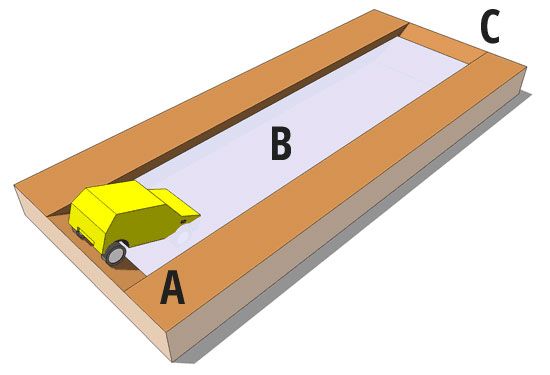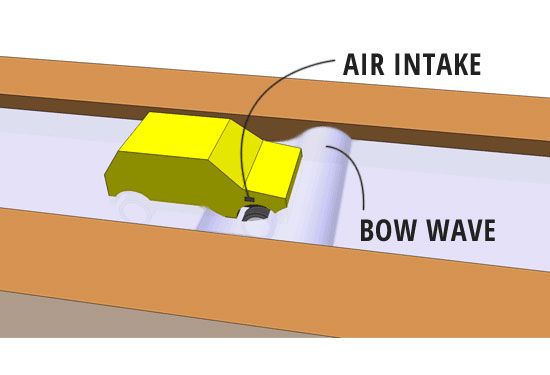DRIVING THROUGH WATER
Driving through a River
4x4 OffRoad Terrain
Wading though deep water can be one of the most enjoyable and exciting aspects of off-road driving, however it can also be dangerous and may damage your vehicle.
Never attempt to cross deep, fast-flowing streams and always prioritise safe driving. As a general rule, don’t drive into water unless you really have to.
Try to work out how deep the water is. In static shallower water, explore on foot and use a stick to gauge the depth—or watch another vehicle go through. It’s a good idea to keep a pair of wellies or waders in the boot.
If there are other vehicles ahead, wait until they’ve left the water. Unsettled water can make a safe passage more challenging.
Drive through the water very slowly at first, then build up momentum. Do not slip/ride the clutch as this reduces control of the vehicle. Ease off the accelerator as you reach the other side.
A Land Rover 4x4 can manage submersion of between 50 and 90cm. Refer to your manual to find your maximum wading depth.
Driving in deep water
It’s a good idea to have a reference point on the vehicle as an indication of the wading depth – usually the top of the wheel rim is a safe bet, but consult your handbook for more information.
- Check your vehicle’s maximum wading depth
- Recce the crossing on foot
- Consider the environmental impact
- Select a gear which reduces the chances of stalling
- Use a bow wave to artificially reduce the depth of the water
- Keep moving and don’t let the engine stop
- Avoid flowing water unless you know what you are doin
Approach angle and driving path
Choose a downstream path. Going against the flow could stop the vehicle. Also avoid anywhere deeper than the center of the tires. In shallow places where the stream is slow,you must be careful of mud and sand accumulations. Water is deeper than it appears, so add 20 to 30% to the depth as it looks from the surface.
Whether you’re entering a river, lake or a deep trough, you’ll find most areas of water have a steep entry (A) and exit point (C) and submerged ground under the water which may or may not provide decent traction and support (B).
Gear selection and speed
Entering the water
When you descend the slope it’s sensible to use exactly the same technique described on our hill descent article. Enter the water gently in a low gear to prevent a huge splash. Then accelerate slightly and change up if necessary when you’re on a flat surface.
On the flat
Select a gear which provides a decent amount of traction, but reduces the chance of engine stall, and keep the engine in the power bend. Second gear in low range (if fitted) is usually about right, but if you don’t have low range it’s probably best to stick to first. By driving slowly and steadily (jogging pace) through the water you’ll find that a bow wave naturally forms in front of the car. This is useful as it artificially lowers the level of the water at the front of the vehicle, crucially around the engine bay and air intake.
Follow the wave and try to keep it about a metre in front of your vehicle for the best results. This provides an additional layer of protection for sensitive vehicle components, however if you stop this effect is cancelled out immediately. Ensure you can keep going once you’ve entered the water – the what you should check on the recce, or altenatively follow the path of a previsouly successful vehicle. Don’t let the engine stall – while the engine is running the gas pressure will prevent water entering the exhaust pipe (even if it’s completely submerged). But if you turn the engine off or stall, the rapidly cooling gas will suck water up towards the engine and can clog up and damage the catalytic converter. If you do stall, try to restart the engine as quickly as possible and you should be ok, but if it won’t start wait to be recovered to prevent costly engine repairs.
Exiting the water
When you’re getting close to the other side it’s a good idea to ease off the throttle – as the bow wave hits the bank it will come back towards the car and can splash well over the bonnet if speed isn’t reduced. Climb out of the water using the techniques outlined in our article on climbing hills and you’ve made it! Reconnect the fan if necessary and continue on your adventure.

The anatomy of a deep water trough



